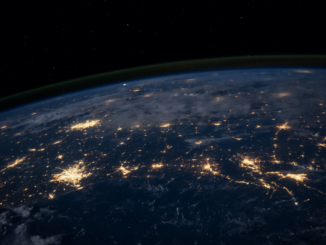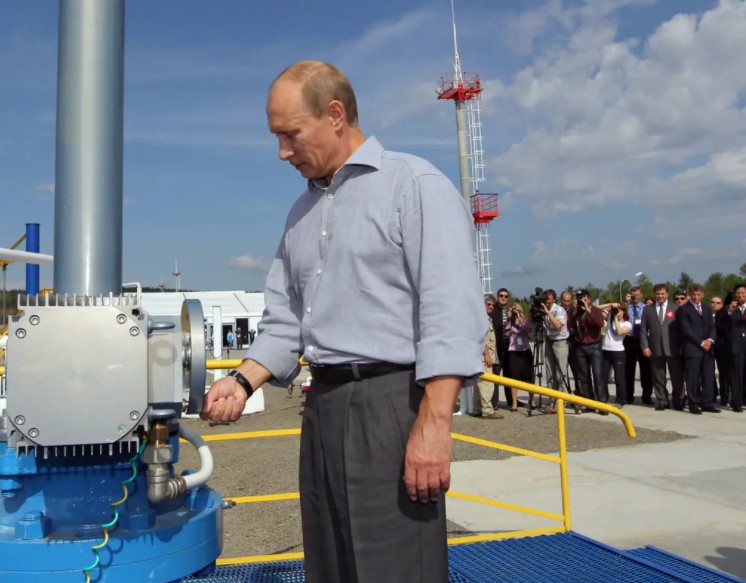
In the ongoing geopolitical chess game surrounding Russia’s invasion of Ukraine, Western sanctions aimed at crippling Moscow’s energy revenues continue to face significant hurdles. Despite intensified pressure from the United States and the European Union, tankers laden with Russian crude oil are still docking at Indian ports, underscoring the limitations of these measures. This persistent flow not only bolsters Russia’s economy but also highlights how global energy markets adapt to circumvent restrictions, often through third-party nations like India.
Are you from California or New York and need a tax break?
The Persistent Flow of Russian Oil to India
India has emerged as a pivotal player in Russia’s energy export strategy, absorbing a substantial portion of Moscow’s crude that was once destined for Europe. Russian oil now constitutes 35-40% of India’s seaborne crude imports, a dramatic rise from just 2% before the war. This shift is fueled by attractive discounts of $10-20 per barrel below global benchmarks, allowing India to save billions on import costs while maintaining energy security. Tankers, often part of Russia’s “shadow fleet” of aging vessels, evade Western insurance and tracking by operating through non-Western channels, ensuring deliveries continue unabated.
The EU’s recent efforts to tighten the noose, including lowering the price cap on Russian crude from $60 to $47.60 per barrel in its 18th sanctions package, aim to further squeeze Moscow’s revenues. This adjustment, approved in July 2025, includes a dynamic review mechanism and targets over 100 additional shadow fleet vessels, bringing the total banned to 444. Yet, skepticism abounds regarding its impact. Russia’s economy has shown resilience, growing by 4.1% in both 2023 and 2024, driven by military spending and redirected exports to Asia. Projections for 2025 indicate a slowdown to 1.4-1.5%, but this still outperforms initial post-invasion forecasts, suggesting sanctions have not delivered the knockout blow intended.

Europe’s Bid to Block Refined Russian Products
Compounding the crude oil challenge, Europe is grappling with Russian diesel refined in third countries like India and Turkey. Prior to tighter measures, up to 40% of Europe’s diesel needs were met by Indian refineries processing discounted Russian crude, creating a glaring loophole. New proposals seek to ban imports from nations handling Russian crude, potentially effective by early 2026, but this risks supply crunches in a continent with declining refining capacity and high demand in sectors like logistics and agriculture.
If implemented, such blocks could force India to source pricier oil from Saudi Arabia, Iraq, the UAE, the US, Guyana, or Brazil, potentially hiking Europe’s household energy bills by 5-10%. Meanwhile, Russian diesel might simply reroute to Latin America or other Asian markets, illustrating the adaptability of global trade. Analysts point out that traders often find workarounds, such as longer routes and altered paperwork, ensuring Russian energy indirectly re-enters restricted markets.
Looming US Secondary Sanctions and India’s Response
Adding to the pressure, US President Donald Trump has threatened 100% secondary tariffs on countries buying Russian oil above the G7 cap if no Ukraine peace deal materializes within 50 days. These measures could disrupt 1.5-2 million barrels per day of Russian supply, pushing Brent crude prices to $90-100 per barrel by mid-2025. India, a key target, has historical precedent for compliance—halting Iranian oil imports in 2019 under similar Trump-era sanctions—but officials emphasize strategic autonomy and expanded supplier diversity from 27 to 40 sources.
While India could pivot to alternatives, the transition would not be painless. Higher costs from non-Russian sources could inflate domestic fuel prices, strain the economy, and increase emissions from extended shipping routes. Indian refineries, including one partially owned by Rosneft now facing EU asset freezes, play a crucial role in processing and re-exporting Russian crude as refined products to Europe. This interdependence underscores the unintended consequences: sanctions meant to isolate Russia may instead fuel global inflation and disrupt alliances.
Why Sanctions Fall Short
The core issue lies in enforcement challenges and market dynamics. Russia’s shadow fleet and partnerships with non-Western nations allow it to maintain export volumes exceeding 10 million barrels per day. The EU’s unilateral cap reduction, without full G7 alignment, further complicates consistency. As EU growth lags at around 1.1% for 2025, compared to Russia’s more robust figures, the sanctions’ economic toll appears heavier on the imposers than the target.
Moreover, buyers like India prioritize energy affordability and security over geopolitical alignment, resisting external pressures. This multipolar energy landscape reveals sanctions’ limitations: while they raise costs for Russia, they fail to halt flows entirely, instead reshaping trade patterns and potentially benefiting opportunistic players.
Look at Russia’s GDP over the last several years, and they have been growing.
Russia’s Gross Domestic Product (GDP) over the last 10 years (2015–2024) is presented below in nominal terms (current US dollars). These figures reflect the total market value of goods and services produced within the country each year, converted to USD using official exchange rates. Data is sourced from reliable economic databases like the World Bank and IMF, with fluctuations often influenced by oil prices, sanctions, currency volatility, and global events such as the COVID-19 pandemic and the ongoing war in Ukraine. And compare these numbers to Germany or the EU for following Net Zero policies.
|
Year
|
Nominal GDP (trillion USD)
|
|---|---|
|
2015
|
1.363
|
|
2016
|
1.277
|
|
2017
|
1.574
|
|
2018
|
1.657
|
|
2019
|
1.693
|
|
2020
|
1.493
|
|
2021
|
1.84
|
|
2022
|
2.266
|
|
2023
|
2.021
|
|
2024
|
2.174
|
Looking Ahead: Implications for Global Energy Markets
As tankers continue to deliver Russian crude to Indian shores, the effectiveness of US and EU sanctions remains in question. Tighter measures could spark supply disruptions, higher prices, and economic ripple effects worldwide. For energy stakeholders, this saga serves as a reminder that in an interconnected global market, isolating a major producer like Russia is far easier said than done. Policymakers must weigh the risks of escalation against the realities of energy interdependence, lest sanctions backfire and exacerbate the very instabilities they aim to resolve.
Make no mistake, we have been sayting that the war mongers in Washting DC need to be ignored on this. It will be a huge mistake if President Trump follows through on the secondary sanctions for buying Russian oil, LNG, natural gas and coal. As we said in the article “Can India Replace Russian Oil if Secondary Sanctions by President Trump?”that this is a horribly bad idea and we need to get President Putin to the negotiation table through business deals and not sactioning his customers. President Putin has been telegraphing all allong what is important to him, but our foriegn policy people are listiening to the wrong sources. We have been covering that from the beginning. This will backfire horribly for the most winning President in U.S history.
Is Oil & Gas Right for Your Portfolio?
Crude Oil, LNG, Jet Fuel price quote
ENB Top News
ENB
Energy Dashboard
ENB Podcast
ENB Substack






